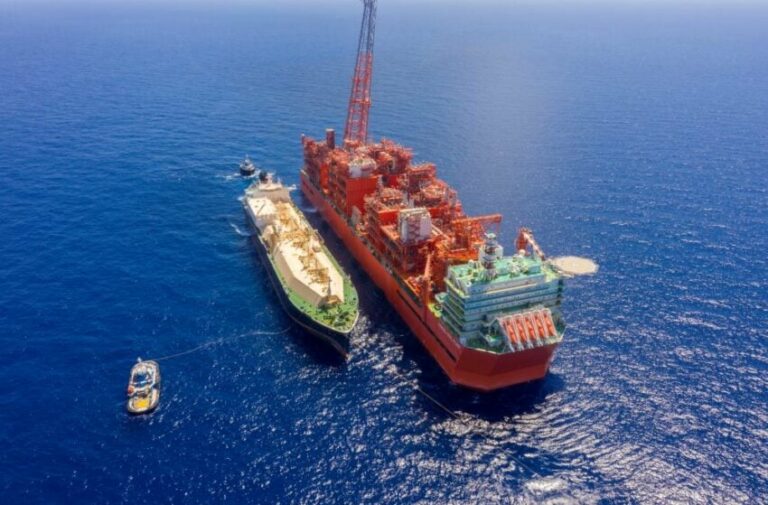AEC: African LNG sector will undergo geographical shift
African Energy Chamber (AEC), an energy advocacy group, has released its new quarterly market-focused report, providing outlook and key insight into the continent’s LNG trends and showing that the African gas sector’s center of gravity is undergoing a geographical shift.

Over the last few years, the global LNG industry has faced a series of challenges and turnovers due to the COVID-19 pandemic and the Russian invasion of Ukraine.
Africa’s LNG sector has also seen major projects delayed, revamped, and occasionally even canceled in response to the pandemic, and it has attracted new attention from European investors keen to secure supply alternatives to Russian gas.
However, these trends are not the only source of change for the African LNG industry as presented in AEC’s recent report, “The State of African Energy Q2 2023 Outlook.”
NJ Ayuk, Executive Chairman of AEC, highlighted the geographical shifting of the African gas sector’s gravity center from north and west to the east as one of the developments in the pipeline that are causing change in the continent’s LNG industry.
Earlier this year, the AEC published its “The State of African Energy Q1 2023 Report,” noting that the African continent was on track to see its LNG production and export capacity grow significantly.
The report predicted that this growth would occur partly on the back of new greenfield projects off the coast of countries including Senegal, Congo, Mauritania, Mozambique, and Tanzania and partly due to capacity expansion in established gas-producing states such as Algeria, Nigeria, and Angola.
It also explained that established producers would account for the largest share of growth in the short term, as new entrants into the sector would not be in a position to make major contributions until considerably later in the decade.
According to Ayuk, the AEC expects this forecast to hold true, and the new quarterly report states that Nigeria and Algeria are set to remain Africa’s leading suppliers of LNG between 2023 and 2027. It also notes, though, that the African gas sector’s center of gravity is undergoing a geographical shift.
Currently, seven African countries produce LNG for export: Egypt, Algeria, Nigeria, Equatorial Guinea, Cameroon, Angola, and Mozambique. Four of these countries (Nigeria, Equatorial Guinea, Cameroon, and Angola) lie on Africa’s west coast, while another two (Egypt and Algeria) are in the north, along the shore of the Mediterranean Sea. Only one (Mozambique) lies on Africa’s eastern coast, and it is the newest entrant into the ranks of LNG producers.
Several additional countries are looking to join these ranks by 2035, including Senegal, Mauritania, the Republic of Congo, Tanzania, and Ethiopia. Furthermore, both Nigeria and Mozambique aim to bring multiple new LNG plants online to supplement existing facilities.
In other words, Africa can expect to see multiple new LNG production units built on both the west and the east coasts over the next decade. But as the new quarterly report notes, construction will not be evenly balanced between the two coastlines, Ayuk said.
Related Article
“Instead, East Africa will account for the greater share, as the facilities coming on stream in Mozambique, Tanzania, and Ethiopia will be larger in scale and will have a larger combined capacity than their counterparts in the Republic of Congo, Nigeria, Senegal, and Mauritania. For example, the Republic of Congo is looking to use gas from the offshore Marine XII block to supply two floating LNG (FLNG) vessels that can turn out 3 million tonnes per annum (mmtpa), while Tanzania is looking to use gas from offshore sites known as Blocks 1, 2, and 4 to supply an onshore LNG plant that can turn out 15 mmtpa,” he explained.
Furthermore, Ayuk pointed out significant differences in the timelines for expansion along the two coasts, as the west-coast projects are due to become operational far sooner than the east-coast projects.
“For example, the Republic of Congo is on track to see its first FLNG begin operating by the end of 2023, followed by Senegal and Mauritania with GTA in early 2024. By contrast, TotalEnergies’ Mozambique LNG plant is not expected to begin commercial operations before 2027 or 2028, and Tanzania is not likely to follow suit until 2030 at the earliest since it will not even make a final investment decision (FID) until 2025.
Related Article
-
Eni, Lukoil, and SNPC ink LNG sale and purchase agreement in a ‘significant milestone’ for Congo’s energy development
Business Developments & Projects
“Moreover, Tanzania LNG is not the only east-coast project that has yet to reach the active stage. In Mozambique, for example, U.S.-based ExxonMobil is also expected to wait until 2025 to make an FID on its Rovuma LNG project, while Italy’s Eni has only recently begun discussions with officials in Maputo on using a second FLNG vessel for the proposed Coral Norte project.
“In other words, the African LNG sector’s shift to the east is going to take time. Indeed, it probably won’t be evident until late in the decade, as the new-build projects with the shortest timelines are targeting the continent’s western coast. Moreover, even as the new west-coast plants come online, they’ll continue to be overshadowed by the larger facilities in established LNG-producing states. As such, the shift away from existing industry heavyweights such as Algeria and Nigeria is also going to take time.”








